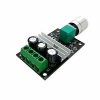Ugh, now I am realising it is possible that the Fotek SSR - 40 and 25 DAs I have could be fake... They say "made in Taiwan" not "Taiwan made"
Considering I got four relays for $8... haha
I live in Australia, is it correct to say that the 240v would make the current pretty low or am I misremembering? Either way I'll probably just try and source a legitimate Fotek. ...
Considering I got four relays for $8... haha
The 40 Amp SSR was manufactured with a BTA20-600C TRIAC. I did a quick online search and discovered that the part is rated at a continuous load of 20 Amps and a non-repetitive load of 200 Amps. In other words, the TRIAC used in the 40 Amp SSR is only rated for 20 Amps!
I live in Australia, is it correct to say that the 240v would make the current pretty low or am I misremembering? Either way I'll probably just try and source a legitimate Fotek. ...
Last edited:


